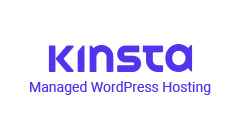My wife and I recently hired a contractor remodel our kitchen, and throughout the project I couldn’t help but make comparisons to my own industry. Spoiler alert – you get what you pay for whether you’re buying a new kitchen or a new website.
From a learning perspective, the most interesting part about the kitchen remodel was the planning and hiring process. How do we find someone reliable that can work within our budget and timeframe and do a great job at the same time? The reality, especially in an area with a high cost of living, is that this is very difficult to achieve.
Fast, Cheap, Good: Pick Two
The client’s goal for hiring any contractor or consultant is a quick turnaround with good quality at a low price. But fast, cheap and good doesn’t really exist – you can just pick two.
From our experience, we had to be more realistic and increase our budget slightly in order to keep some of the deal-breaker features we wanted in our kitchen, knowing that a quick timeline was super important. So the process became about finding potential contractors that would work with us to find the right balance of features and budget that would work for everyone. Ultimately we did strike that balance and the project turned out great.
Here is a quick breakdown of the three different Fast / Cheap / Good scenarios with examples from the website building world.
Fast + Cheap = Bad Quality
Please no. Just no.
If you get offered the lowest budget and the fastest timeline, all while offering you the seemingly same set of deliverables as everyone else, you’re more than likely going to compromise on the quality of your project somewhere. You may sometimes score an up-and-coming freelancer who doesn’t know their worth yet, but this situation also comes with its own set of risks and potential for costly cleanup later on in the project’s lifecycle.
More than likely you will get a combination of the following:
- Template-based work
- Outsourced to a 3rd party
- Insufficient time for testing, review, code planning
- Possible security issues
This isn’t to say there’s no time and place for this situation, you just have to be aware of, and willing to accept the risks that come with this approach.
Fast + Good = Not Cheap
This starts out as a dream scenario for a client. You’re going to get exactly what you want, when you want it. But, you will have to be realistic about your budget in this scenario as you are getting a high value service in terms of excellent quality and quick turnaround. In this situation:
- Client and contractor should have a clear understanding of their role in the project including providing assets, reviews, and deliverables
- Clear communication will be vital to adhering to the timeline, so make sure that the pre-project planning stage reflects this skill
- Ask the contractor what their current workload will be during the project and what level of involvement they will personally have – sub-contractors aren’t inherently bad as they can provide greater speed and diversity of skills, but you should be aware of who is involved
- Make sure you have referrals that backup the contractor’s claims that they can provide this service
Cheap + Good = Not Fast
Another sweet spot for the client. Realistically this option is sometimes possible when working with a consultant who takes pride in their work and won’t ship anything out the door that is poor quality. But remember, if your budget isn’t as high as what the contractor normally works with, the project is not going to be a top priority. Make sure you are both very clear on the expectations regarding communication, milestones, and adherence to the timeline over the course of a longer project.
How to Achieve the Right Balance
For me, producing “good” work is not negotiable. But just like most things in life, “good” is also a spectrum that is not black and white. So the first place to start is to ask
“What do I really need to make this project work for my business in terms of overall quality, features, and deliverables?”
Ultimately it can only be you as the client who can determine what will truly make the project a success, but it would be silly to not work with your service provider to explore ways to elegantly achieve that balance.
Some ways for striking a healthy balance in your website project:
- Be open to building out your project in phases, and specifically make sure they know about future plans so they account for them in early stages
- Lean on the professional experience of the person you are working with to make suggestions for how to work within your budget
- Make sure a proper discovery phase is completed before the project begins to further identify opportunities for creating value that will offset upfront costs
- Your final budget and timeline will thank you for establishing a clear plan, contract and schedule for your project
- Examine your timeline closely – being more flexible and perhaps more realistic on time can lead to more leeway in budget
- Consider stop-gap measures such as a landing page or template while you plan and save for the full budget required to get what you want

